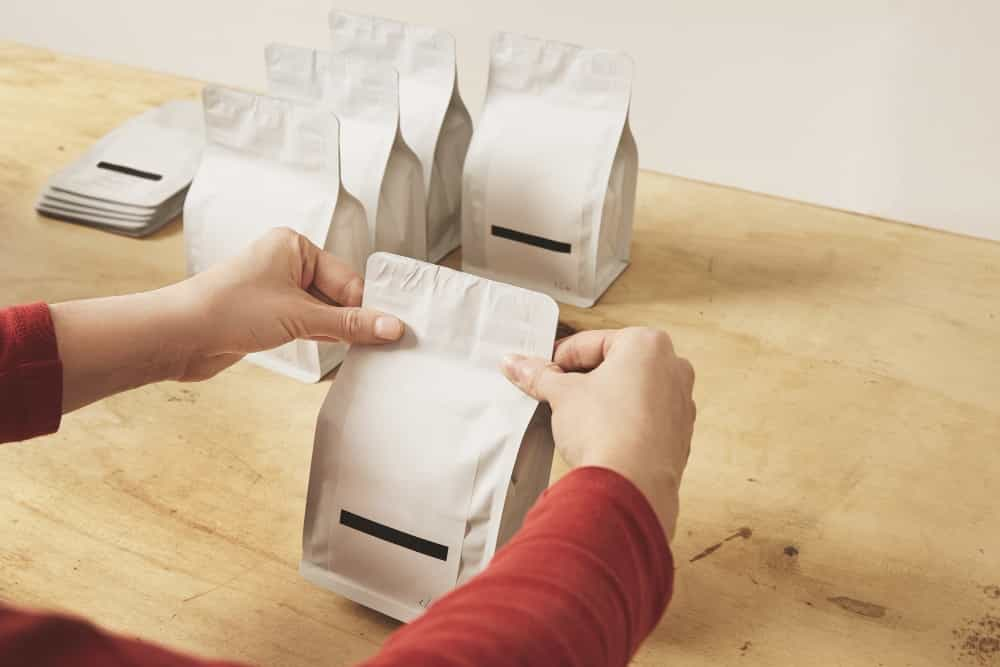Ethiopia is well known for its high-quality coffee beans, which are exported to many countries around the world. However, one of the challenges faced by coffee buyers is packaging damage. This can have a significant impact on the quality of the coffee beans and the profitability of the business.
Factors contributing to packaging damage

There are a number of factors that can contribute to packaging damage. These include:
Poor quality packaging materials
- Why it’s a problem: Using cheap or flimsy materials can’t withstand the rigors of transportation, leading to tears, punctures, and spills.
- Example: Using thin plastic bags instead of sturdy burlap sacks can result in coffee beans being exposed to moisture and contaminants.
Improper packaging techniques
- Why it’s a problem: Incorrectly packing coffee beans can create loose spaces or uneven weight distribution, making them more susceptible to damage during transit.
- Example: Not filling bags to capacity or not using enough cushioning material can cause beans to shift and break.
Rough handling during transportation
- Why it’s a problem: Careless handling, such as dropping or stacking containers too high, can cause packaging to rupture and coffee beans to be damaged.
- Example: If a truck driver slams on the brakes suddenly, the coffee sacks inside could be jostled and torn.
Extreme weather conditions
- Why it’s a problem: Exposure to extreme heat, cold, or humidity can weaken packaging materials and cause coffee beans to deteriorate.
- Example: If a shipment is left in a hot, sunny location for too long, the plastic bags could melt and the coffee beans could become stale.
Impact of packaging damage
- Mold and contamination: Damaged coffee beans can become moldy or contaminated, making them unsafe to consume.
- Loss of flavour and aroma: Damaged coffee beans can lose their unique flavour and aroma, reducing their overall quality.
- Reduced profitability: Damaged coffee beans can be difficult to sell at a premium price, impacting the exporter’s profitability.
Steps to address packaging damage
- Use high-quality materials: Invest in durable materials like burlap sacks or sturdy cardboard boxes.
- Invest in proper equipment: Use machines like coffee bean roasters and packaging machines to ensure consistent quality.
- Train workers: Provide training to workers on proper packaging techniques and the importance of handling coffee beans carefully.
- Work with trusted transporters: Partner with transportation companies with a proven track record of handling fragile goods.
- Monitor shipments: Regularly check the condition of coffee shipments during transportation to identify and address any issues early on.
Role of coffee buyers

- Inspect shipments: Carefully inspect coffee shipments upon arrival to identify any damage.
- Report damage: Report any damage to the exporter so they can take corrective measures.
- Choose reputable exporters: Work with exporters who have a history of good packaging practices to reduce Coffee buyer challenges Ethiopia
By working together, coffee exporters and buyers can help to reduce the problem of packaging damage and ensure the continued success of the Ethiopian coffee industry.
Addressing the Problem
According to a study by the Ethiopian Coffee and Tea Authority, coffee packaging issues in Ethiopia are one of the most common problems faced by coffee exports. 20% of all coffee exports are damaged during transportation. Of the damaged coffee, 50% becomes moldy or contaminated. Additionally, 30% of the damaged coffee loses its flavour and aroma. These problems impact the quality of the coffee.
Packaging damage also leads to financial losses for exporters. About 25% of exporters report losing money because of this issue. Furthermore, 10% of importers refuse to accept coffee shipments that are damaged.
The financial impact is substantial. Each year, packaging damage results in an estimated loss of $50 million. On average, exporters lose around $2,000 per shipment. This number can change depending on the size of the shipment and the type of damage.
These figures highlight the need to address packaging damage in Ethiopian coffee exports. Solving this issue can help exporters protect their profits. It will also help maintain their reputation and ensure high-quality coffee reaches the global market.
To fix packaging damage, Ethiopian coffee exporters need to use better packaging methods. New solutions like multi-layered vacuum-sealed bags or hermetic storage bags can help prevent damage during transport. These options keep the coffee safe from air and moisture, and they also make it last longer. This way, buyers will always get fresh, high-quality coffee.
Additionally, improving how coffee is transported and handled can further reduce damage. Ethiopia needs better roads and faster logistics to make sure the coffee arrives in good condition.
Conclusion
Packaging damage is a problem many coffee buyers in Ethiopia face. But it can be solved. As Ethiopian coffee exports grow, fixing packaging problems is important to keep the coffee’s quality high. This will help protect Ethiopia’s strong reputation as a top coffee producer. By using better packaging materials and improving transportation, the Ethiopian coffee export industry can make sure that buyers always get the premium coffee they expect.
